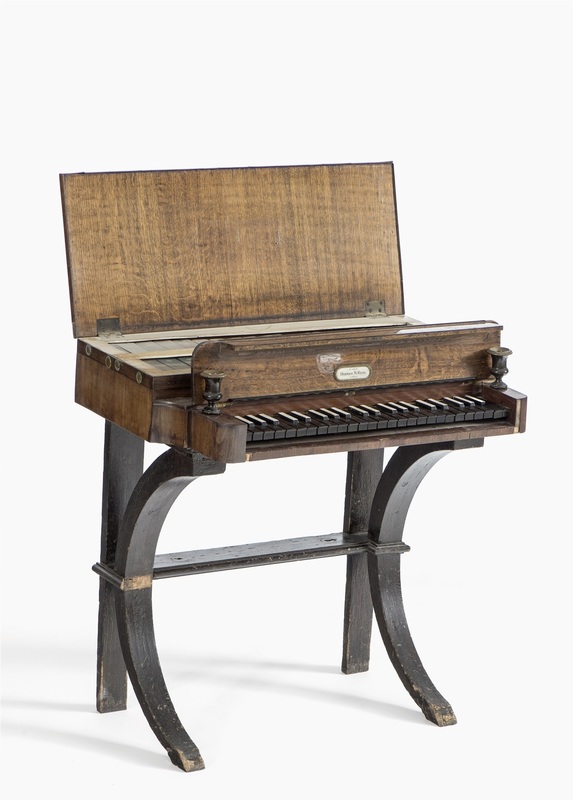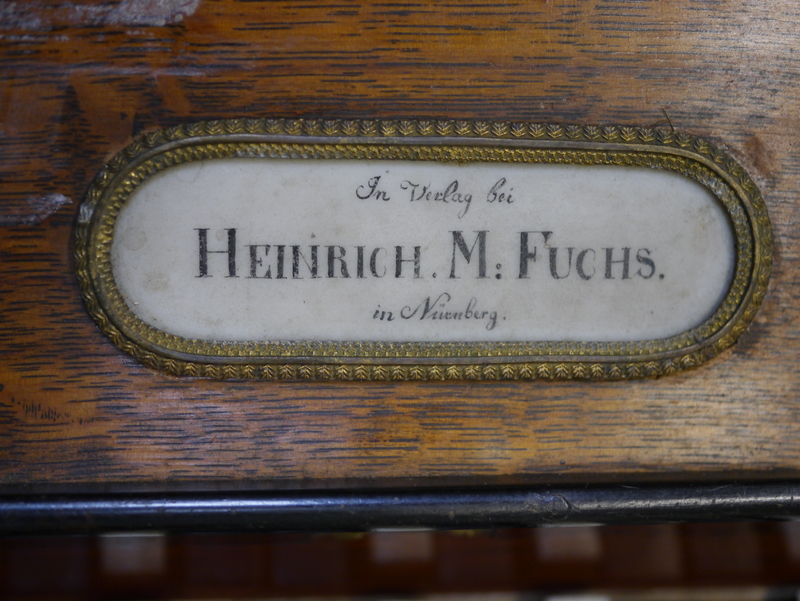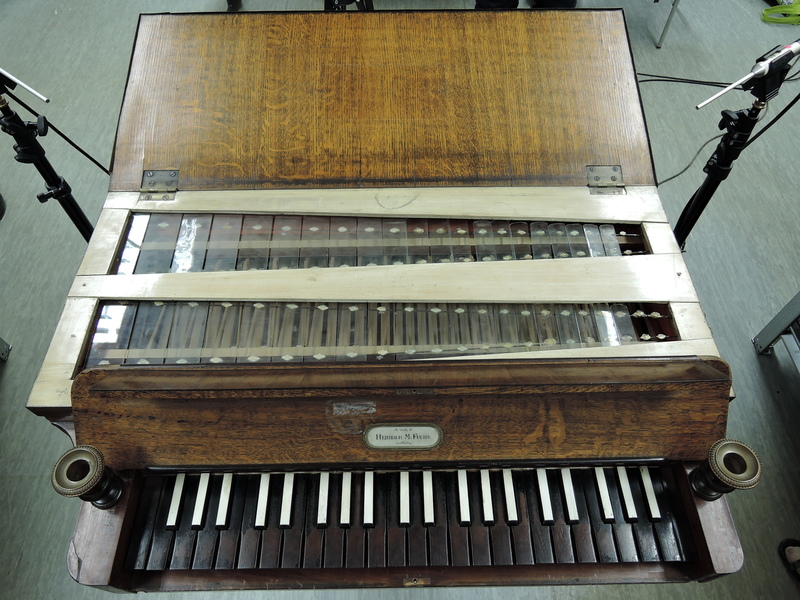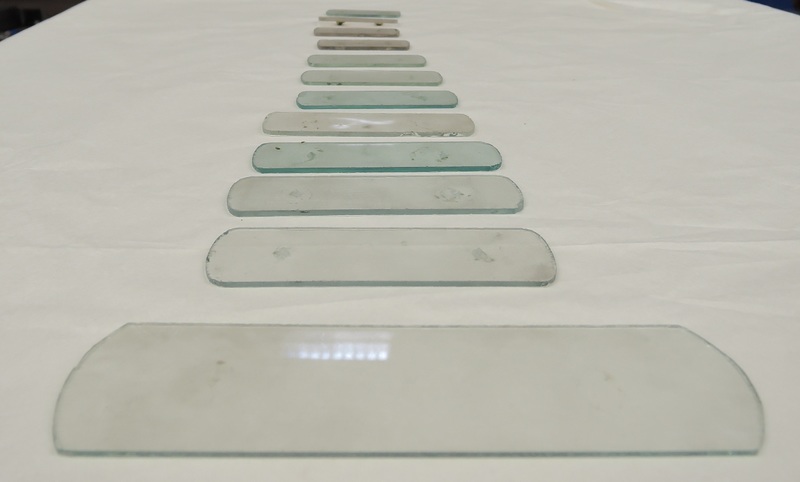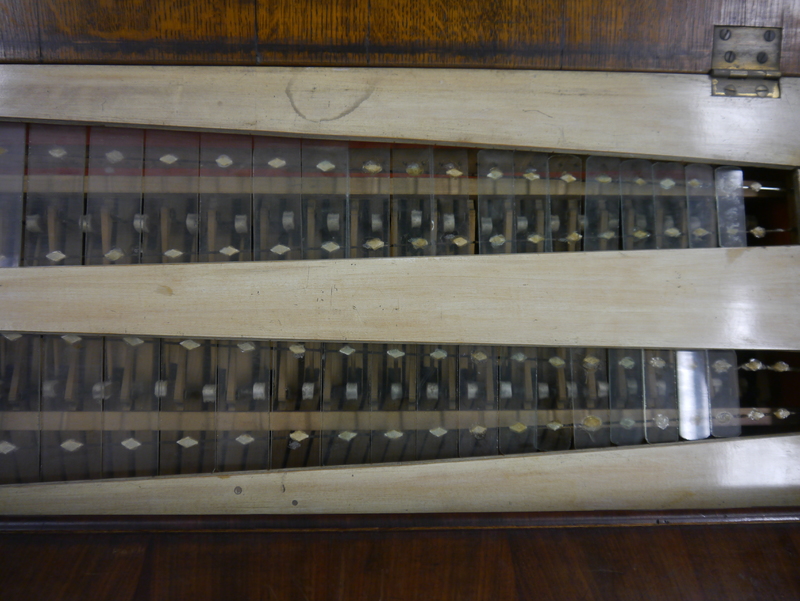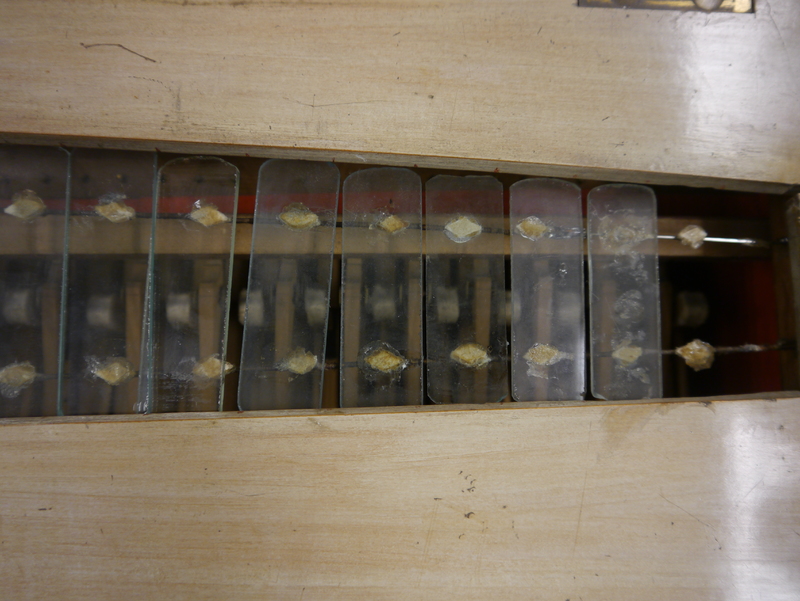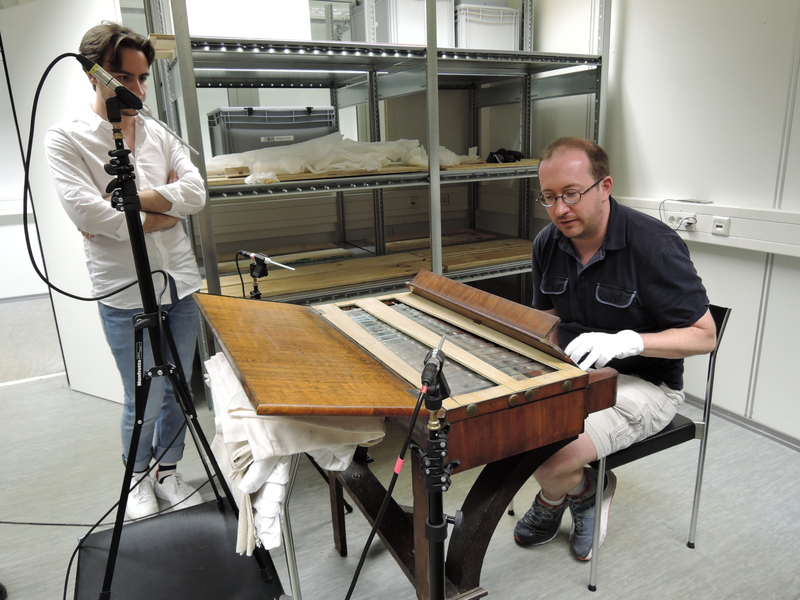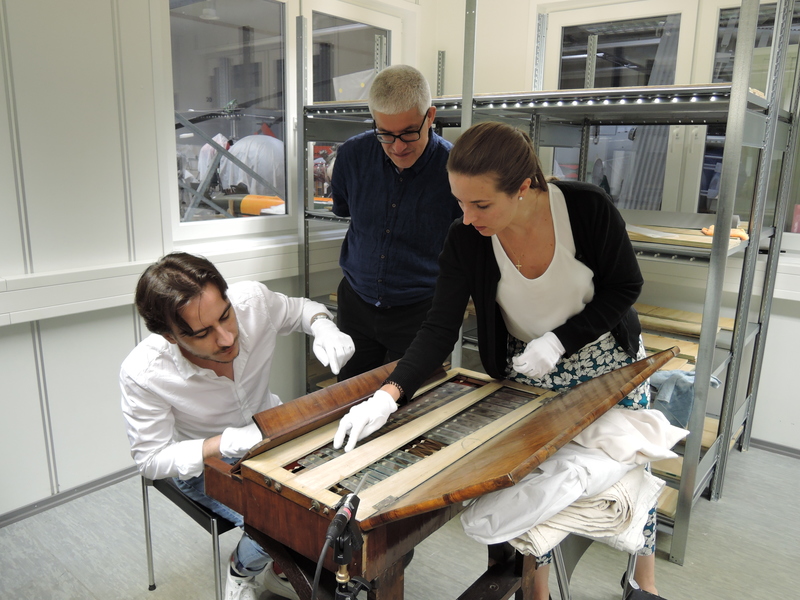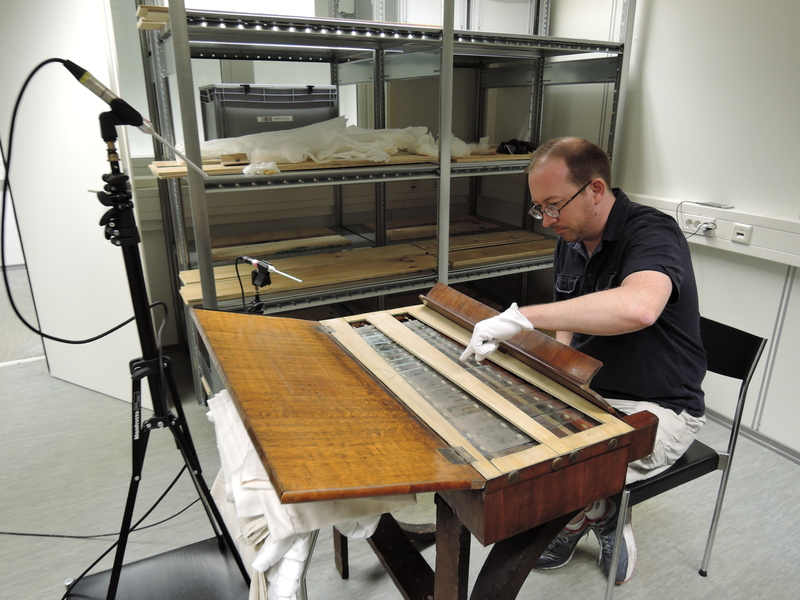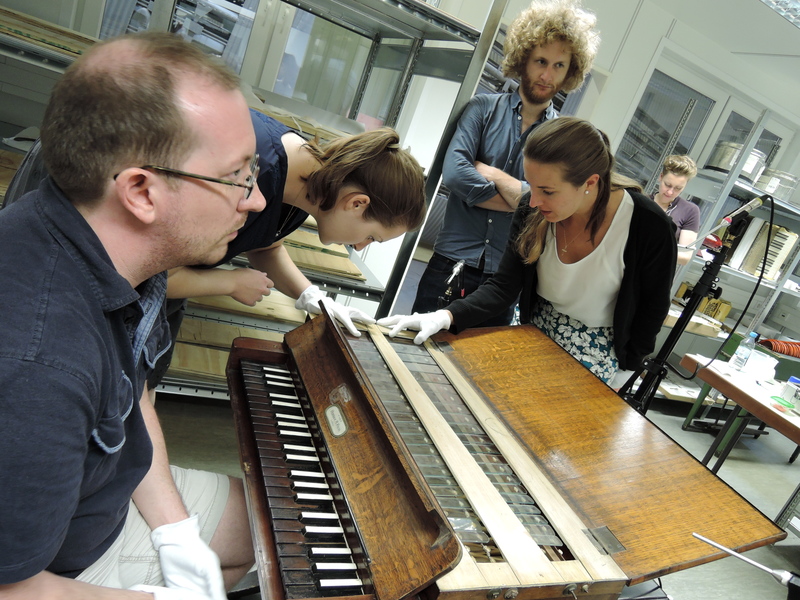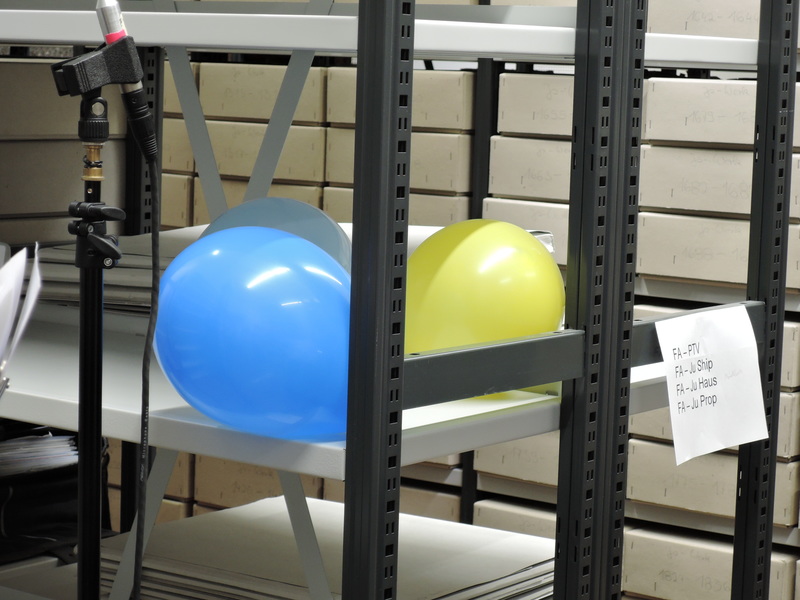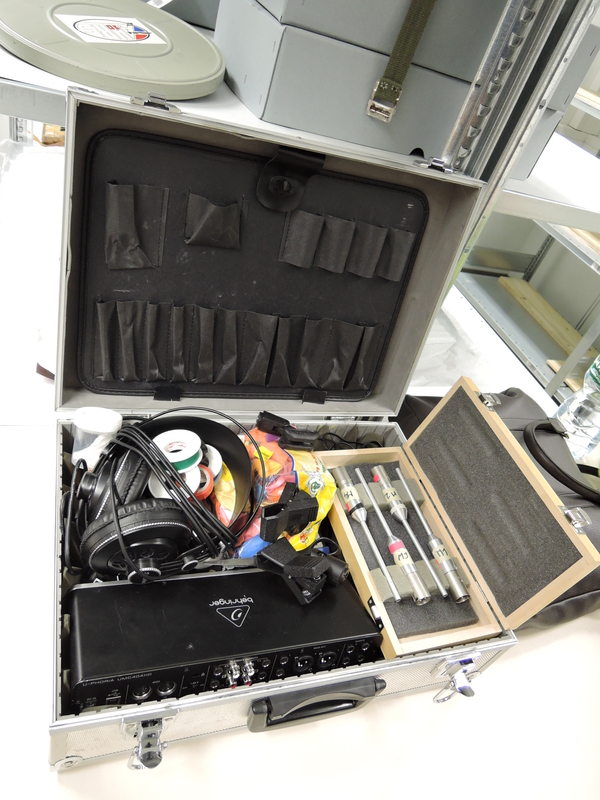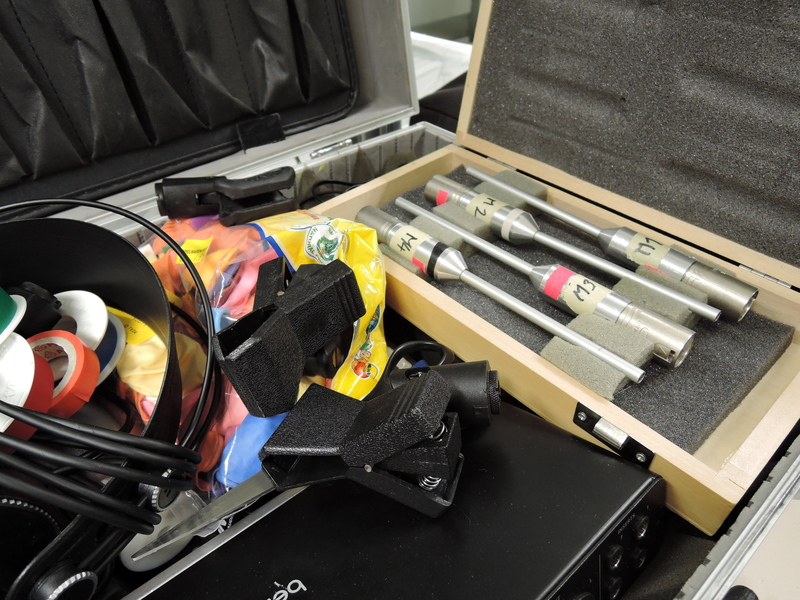Keyed glass?
Glasschord, presumably Nuremberg around 1820, Inv. No. 45933
This rare keyboard instrument conceals a bouncing reed mechanism in a rosewood veneered, rectangular wooden case.[5] The hammers strike tuned glass plates attached on supporting cords in two horizontal rows. The range of the piano is from e to c4. Its lower keys and coverings are lacquered in black, presumably with ebony; the upper keys of blackened wood are covered with bone. The instrument was apparently played often. A rounded nameplate inside the keyboard lid bears the inscription “In Verlag bei / Heinrich. M: Fuchs / in Nürnberg.”
This inscription suggests that Heinrich M. Fuchs is not the instrument manufacturer, but the dealer. And indeed, a wire string manufacturer Heinrich Markus Fuchs can be traced back to Nuremberg from as early as 1815.[6] Shortly thereafter, he is listed as an instrument dealer.
Fuchs did business selling strings to instrument makers in Nuremberg, Munich, and Vienna. He exhibited his products at industrial exhibitions and established international relationships. In the 1860s, the Fuchs company was referred to as a pianoforte shop. Thus, the nameplate in the glass plate piano is a dealer identification plate. The builder is unknown.
The instrument is playable, although 12 of the glass plates are loose. They can be inserted, however. The otherwise bell-like sound of these plates is damped all too quickly. The first row – from the player’s point of view – contains the plates for f, a1, eb3, a3, b3; the back row consists of c2, d2, e2, g#2, b2, b♭, c3.
Leon Chisholm recorded individual tones for the sample library and added an improvisation. For this purpose, two microphones were paired in stereo about 20 cm away from the high and low registers of the instrument. A third microphone, centrally located in front of the instrument, recorded in mono to eliminate unwanted effects such as phase problems or interaural time differences in the propagation of the room reflection. The microphones were calibrated before recording, i.e. leveled to –6 dB at 94 dB.[7]
For recording and editing the samples, the room reverberation time needed to be determined, which we did by popping a balloon. This created a pulse-shaped, broadband signal that allowed us to assess the reverberation time and frequency dependence of the reverberation signal as well as identify specific increases in certain frequency bands. The reverberation time was about 630 ms.
The DAW “Adobe Audition” was recorded with a Behringer U-phoria UMC404HD audio interface. The recording took place on July 31, 2018 in a Deutsches Museum depot.
Musical example
Click here to play the glasschord.
For a material analysis of the glasschord, click here.
[5] A similar instrument can be found in the Regensburg Historical Museum. It was built after 1856/57 by Joseph Schweiger in Stadtamhof (today part of Regensburg). See Michael Wackerbauer, Die Musikinstrumente im Historischen Museum der Stadt Regensburg. Katalog. Regensburg 2009, pp. 181–184.
[6] This information is based on the research of Michael Zahnweh, who evaluated the following literature during his internship. Jahresbericht der Königlichen Studienanstalt Nürnberg, Nürnberg 1815, p. 27; Verhandlungen der Zweyten Kammer der Ständeversammlung des Königreichs Bayern, vols. 3, 4, München 1822, p. 333; Amtlicher Bericht der allerhöchst angeordneten Central-Industrie-Ausstellungs-Commission über die im Jahre 1840 aus den acht Kreisen des Königreichs Bayern in Nürnberg stattgehabte Industrie-Ausstellung, Nürnberg 1842, p. 62; Neues Adreßbuch der Stadt Nürnberg, Alphabetisches Namensverzeichniß, vol. 3, Nürnberg 1857, p. 75; Süddeutsche Presse, No. 7. 8. Jan. 1868, p. 8; Das Handels-Register des Königreichs Bayern im Jahre 1871, München 1872, p. 223; Amtlicher Bericht der allerhöchst angeordneten Central-Industrie-Ausstellungs-Commission über die im Jahre 1840 aus den acht Kreisen des Königreichs Bayern in Nürnberg stattgehabte Industrie-Ausstellung, Nürnberg 1842, p. 61.
[7] Thanks to Katharina Preller and Michael Zahnweh for creating the recording protocols.
Citation: Rebecca Wolf, ‘Glass sounds or the fascination of transparency’, in: Materiality of Musical Instruments. A Virtual Exhibition.

